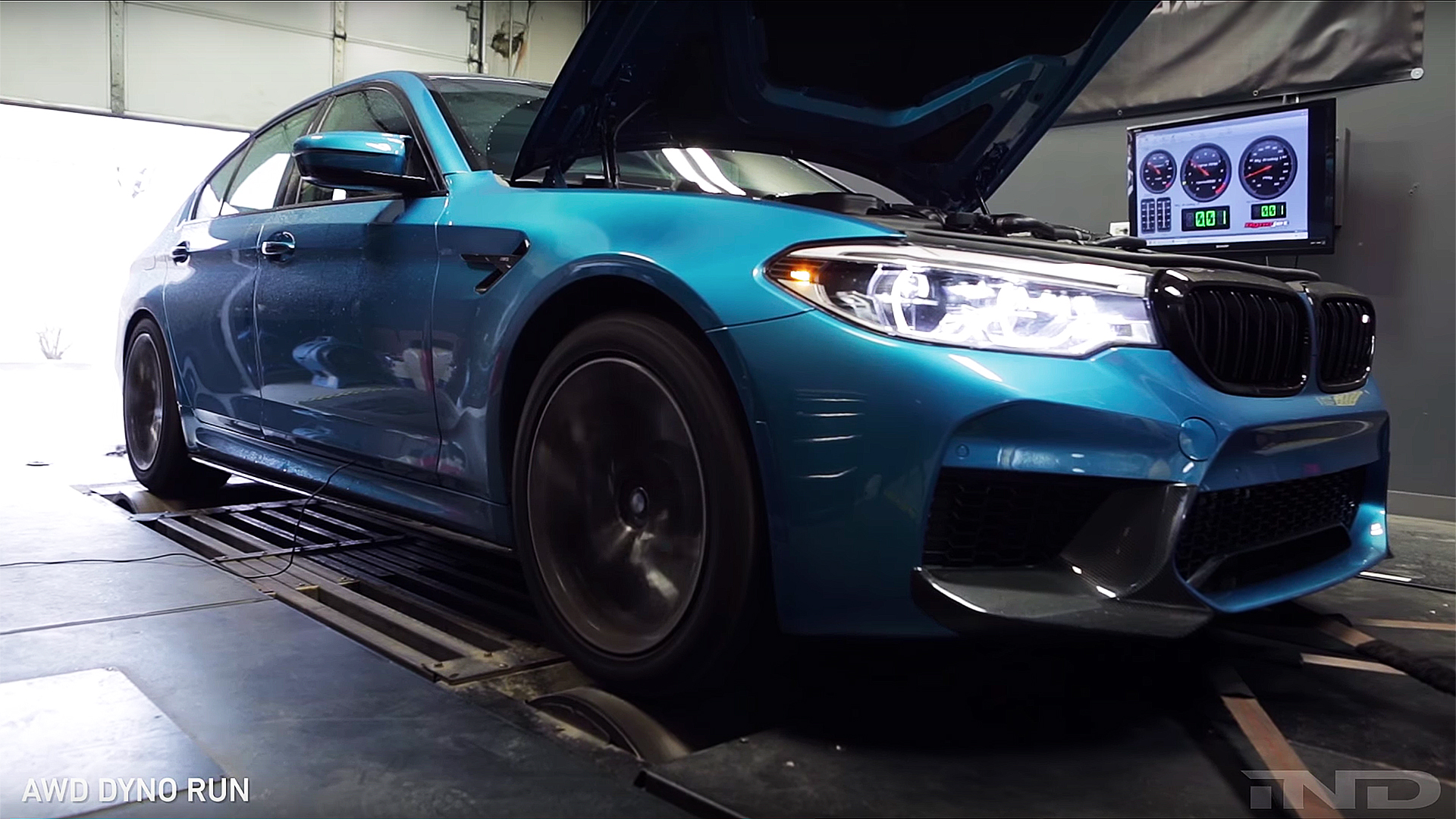

The much-ballyhooed 2018 BMW M5 stormed onto the scene this year with a new all-wheel-drive powertrain, a Guinness World Record for the longest continuous drift, and a twin-turbo V8 that hit 600 horsepower for the first time in the model’s history—officially. But a recent dyno test shows that BMW may be seriously underrating its flagship super sedan.
The engine is an evolution of the V8 from the old M5, and BMW’s engineers fiddled with the fuel system, turbo setup, and several other key areas to boost the stated output to 600 horsepower and 553 pound-feet of torque at the crank, which is how automakers measure and market a car’s horsepower. The number at the wheels will be anywhere from ten to twenty percent lower thanks to drivetrain loss; that is, the energy used up by spinning the transmission, driveshaft, and axles
Still, the company says the heavy, luxurious four-door is capable of rocketing from 0-60 mph in a mind-melding 3.2 seconds. And just as Car & Driver found an actual 0-60 time of around 2.8 seconds in its own testing, a racing parts business in Illinois called IND Distribution brought its stock F90 M5 to a dynamometer shop following the customary break-in period to see if BMW’s factory numbers lined up with reality. It’s not uncommon for higher-end manufacturers to underrate their cars—see the 780-horsepower McLaren 720S. In fact, BMW itself did it with the last-gen M5. So the question is, what’s the real number here?

The test showed that the 2018 BMW M5 recorded 625 horsepower and 608 pound-feet of torque at the wheels in fifth gear and Sport Plus mode. On the low end, that means the all-important crank figure is more like 680 hp—and quite possibly flirting with 700. Hilariously, the car’s “Efficient” eco mode only cut the output by 15 horsepower. These are truly mad times we live in, if you can afford the $103,595 ticket to ride.